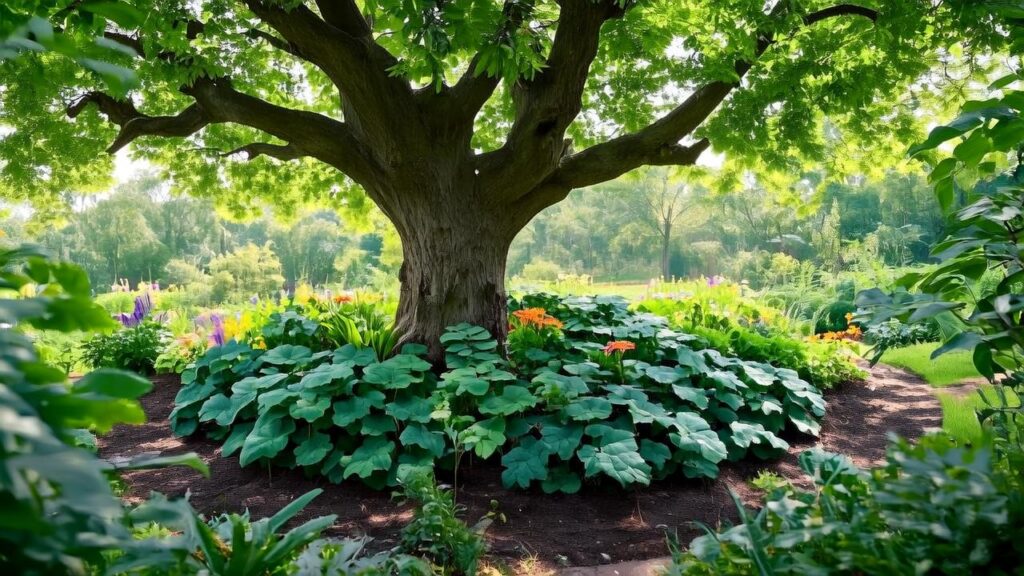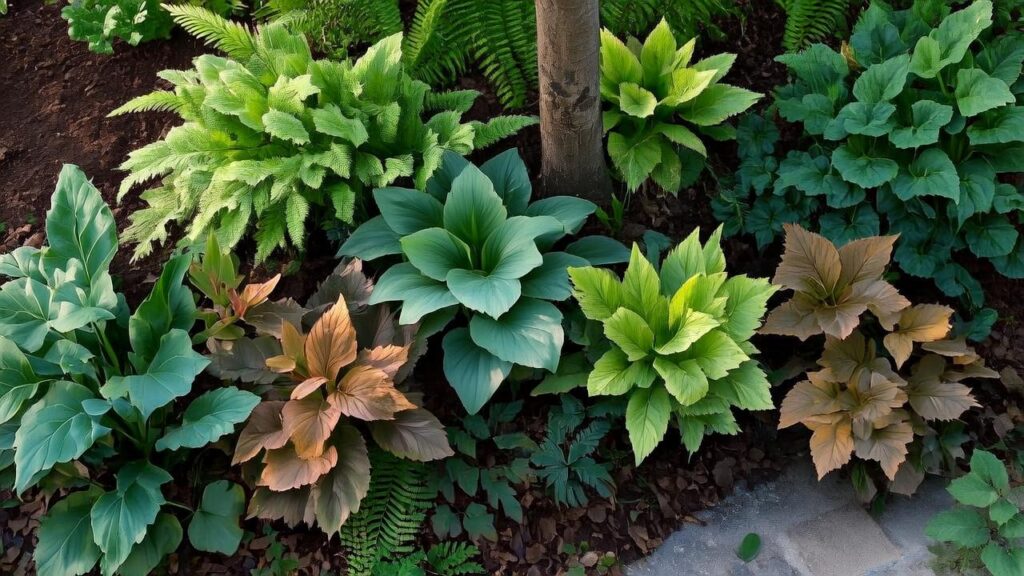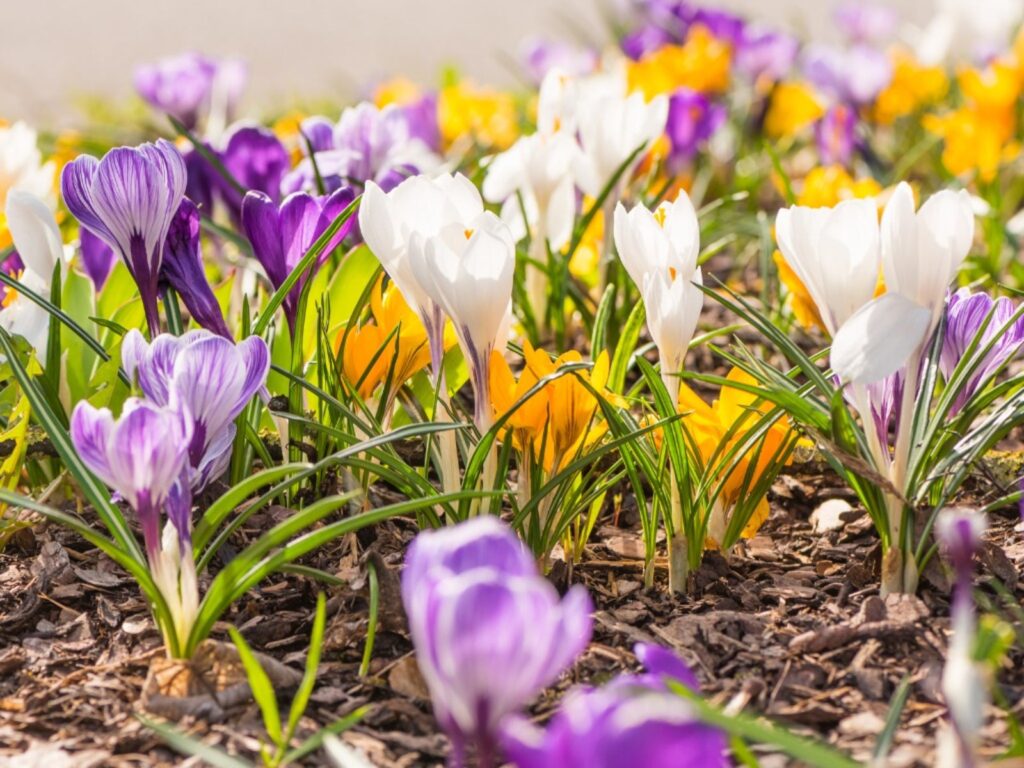
As homeowners seek to maximize their green space, the area around the base of mature trees is increasingly viewed as a prime canvas for garden design. While creating an around-tree flower bed idea can add significant aesthetic appeal, horticultural experts caution that a thoughtful, well-informed approach is crucial to ensure the long-term health of the tree. Improper techniques can lead to root damage, soil compaction, and disease, ultimately compromising the very centerpiece of the landscape.
“The primary directive when planting under a tree is ‘do no harm’,” says Dr. Alison Landry, a horticulture extension specialist at the University of Minnesota Extension. “A tree’s root system is its lifeline. Understanding how to work with it, not against it, is the key to a successful and sustainable under-planting.”
Most of a tree’s critical, fine-hair roots are located in the top 12 to 18 inches of soil. These roots are responsible for absorbing water and nutrients. Activities like deep digging, piling on excessive soil, or creating compacted conditions can suffocate or sever these vital structures.
The Foundation: Best Practices for Planting Around Trees
Before implementing any design, experts from organizations like the Royal Horticultural Society (RHS) and various university extension programs agree on several foundational guidelines. They advise against adding more than one to two inches of new soil or mulch over the tree’s existing root zone. A common and detrimental mistake, they note, is the creation of “mulch volcanoes”—piling mulch directly against the tree trunk, which can trap moisture and lead to rot and disease.
“Always keep mulch and soil at least 6 to 12 inches away from the tree’s trunk to expose the root flare,” a guideline from the Colorado State University Extension emphasizes. The root flare, where the trunk widens at the base, is a critical area for oxygen exchange.
Key Insights for Planting Around Trees
| Key Guideline | Expert Recommendation |
| Protect Tree Roots | Avoid cutting roots larger than one inch in diameter. Work with small plants in small pots to minimize digging. |
| Avoid Soil Compaction | Do not add more than 1-2 inches of soil or mulch over the existing grade. Never pile soil against the trunk. |
| Select Appropriate Plants | Choose shade-tolerant and, often, drought-tolerant species that can compete with the tree for resources. |
| Mulch Correctly | Apply a 2-3 inch layer of organic mulch, keeping it away from the trunk to prevent rot. This conserves moisture and suppresses weeds. |
1. The Classic Shade Garden
The most natural approach is to mimic a forest understory. This involves using plants that thrive in the dappled light and drier soil conditions often found beneath a mature canopy.
- Hostas and Ferns: A timeless combination, offering a variety of textures, shapes, and shades of green. Species like the Japanese Painted Fern (Athyrium niponicum) or the robust Ostrich Fern (Matteuccia struthiopteris) pair well with the bold leaves of Hosta varieties.
- Coral Bells (Heuchera): Valued for their colorful foliage in shades of purple, lime green, and amber, they offer season-long interest with delicate flower spikes in late spring.

2. The Native Plant Oasis
Using native plants is an ecologically sound choice, as they are adapted to the local climate and soil and provide habitat for pollinators.
- Wild Ginger (Asarum canadense): A low-growing groundcover with unique, heart-shaped leaves.
- Foamflower (Tiarella cordifolia): Produces airy, white flower spikes in spring and has attractive, often mottled, foliage.
3. The No-Dig “Lasagna” Bed
For those wanting to avoid soil disturbance altogether, the “no-dig” or “lasagna gardening” method is highly recommended. This involves layering organic materials directly on top of the ground.
“Start with a layer of cardboard to smother existing grass or weeds, then add layers of compost and mulch,” advises a guide from the RHS. “You can plant directly into the compost layer, allowing the cardboard to decompose over time, enriching the soil without deep digging.”
4. The Bench and Bed Combination
Integrate seating for a functional and charming design. A curved bench that wraps partially around the tree trunk provides a restful focal point, with the flower bed filling the space in front or behind it. This is a practical garden design element that invites interaction with the space.
5. The Raised Ring (With Caution)
While aesthetically pleasing, raised beds around trees are a point of contention among horticulturalists. If built too high, the added soil depth can be fatal to the tree.
“If you must build a raised bed, keep it as low as possible—no more than 4 to 6 inches high—and use porous materials like stacked stone without mortar to allow for air and water flow,” warns Landry. It is critical that the new soil does not smother the tree’s original root flare.
6. The Rock Garden Approach
For a low-maintenance and modern look, a rock garden can be an effective tree surround. Use a mix of larger stones and gravel, interspersed with drought-tolerant succulents or alpine plants like Sedum and Creeping Thyme. This approach is particularly suitable for trees that create very dry shade.
7. The Spring Bulb Spectacular
Leverage the period before a deciduous tree fully leafs out. In early spring, the area under the canopy receives ample sunlight, perfect for bulbs.
- Daffodils (Narcissus), Crocuses, and Snowdrops (Galanthus): These early bloomers will provide a burst of color and will have completed their life cycle by the time the tree’s shade becomes dense.

8. The Living Mulch Groundcover
A dense, low-growing groundcover can act as a “living mulch,” suppressing weeds and retaining soil moisture. This is a practical and beautiful planting under trees strategy.
- Sweet Woodruff (Galium odoratum): A fragrant, spreading groundcover with delicate white flowers.
- Barrenwort (Epimedium): A tough, drought-tolerant choice with attractive, heart-shaped leaves and delicate spring flowers.
9. The Whimsical Fairy Garden
A popular choice for gardens with children, a miniature fairy garden at the base of a tree can spark imagination. Use small-scale plants like mosses, miniature ivies, and small-leafed groundcovers to create a tiny landscape. This creative idea turns the space into a playful, magical scene.
Ultimately, the most successful around-tree flower bed ideas respect the tree’s health as the top priority. By choosing the right plants and using safe installation techniques, gardeners can create a beautiful feature that complements their landscape for years to come.
Grow Creeping Thyme the Easy Way—Fragrant, Beautiful, and Bee-Friendly
